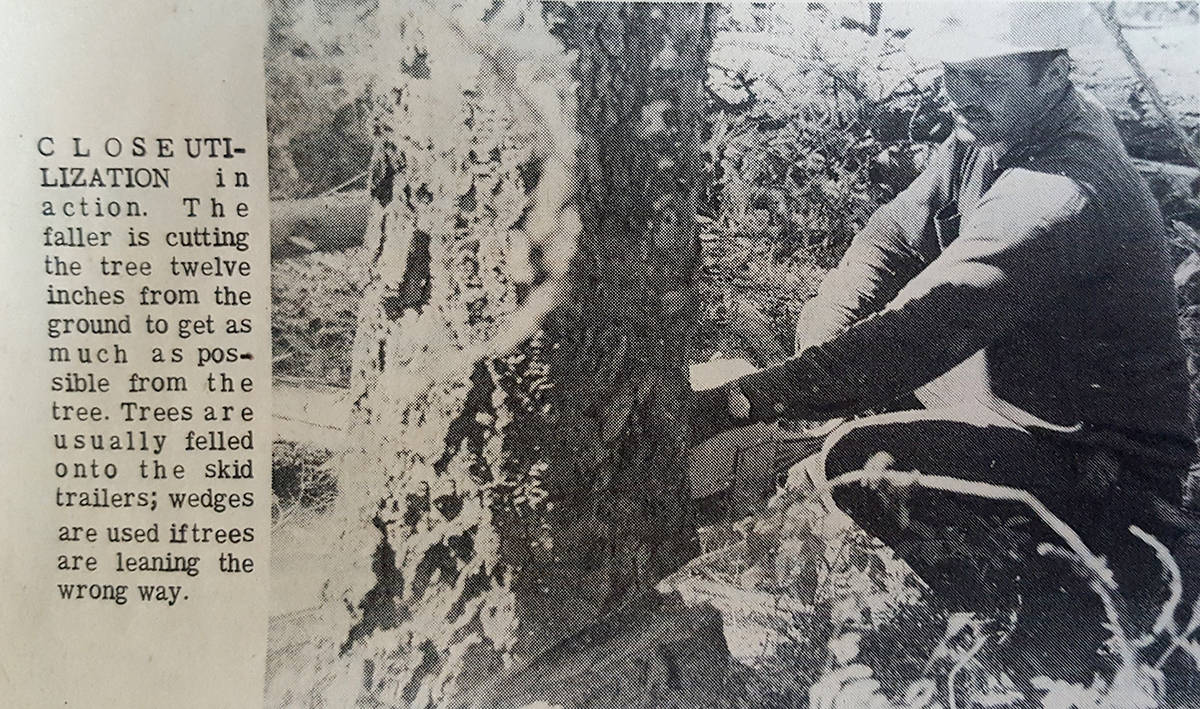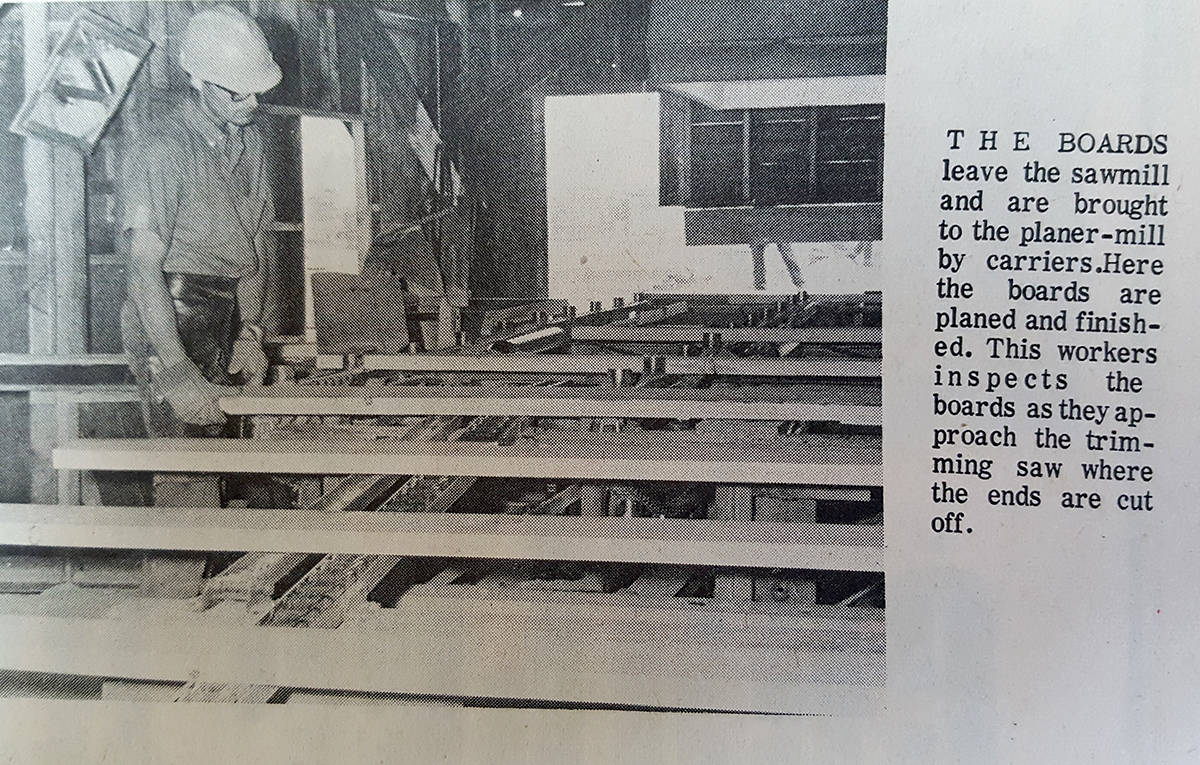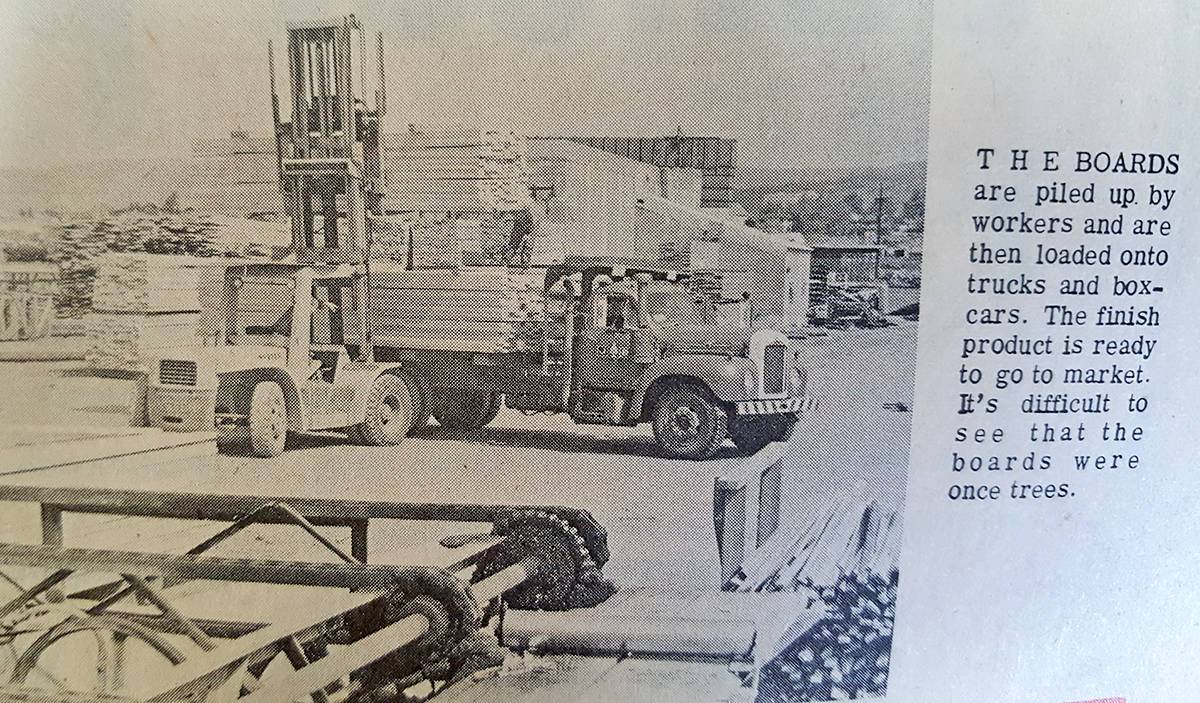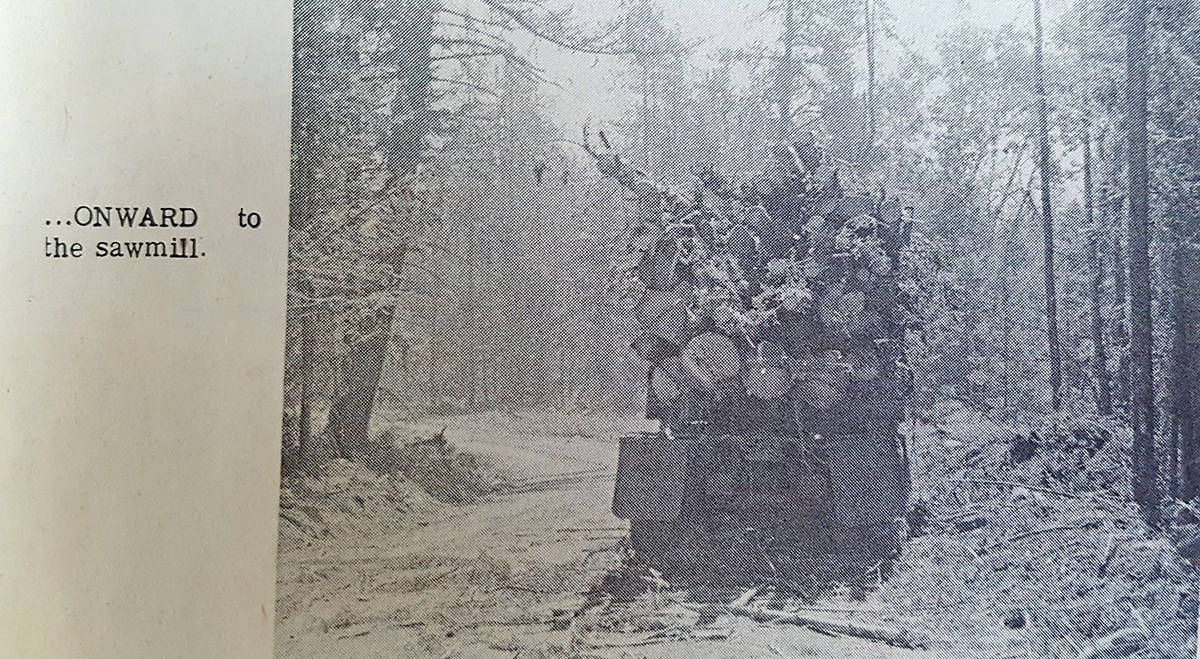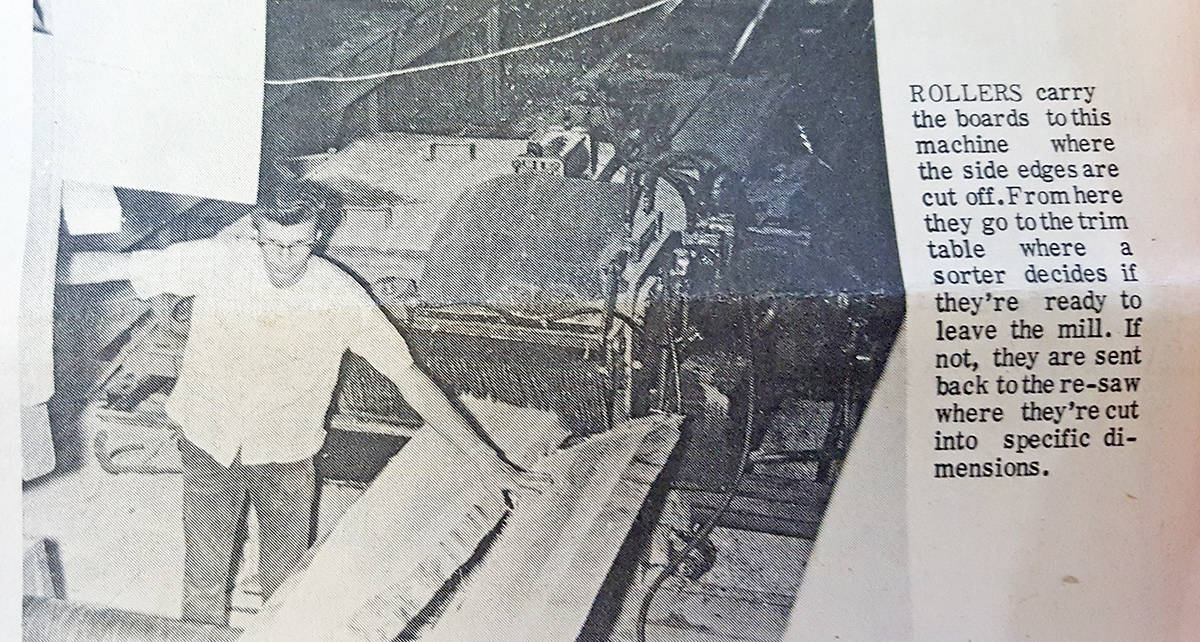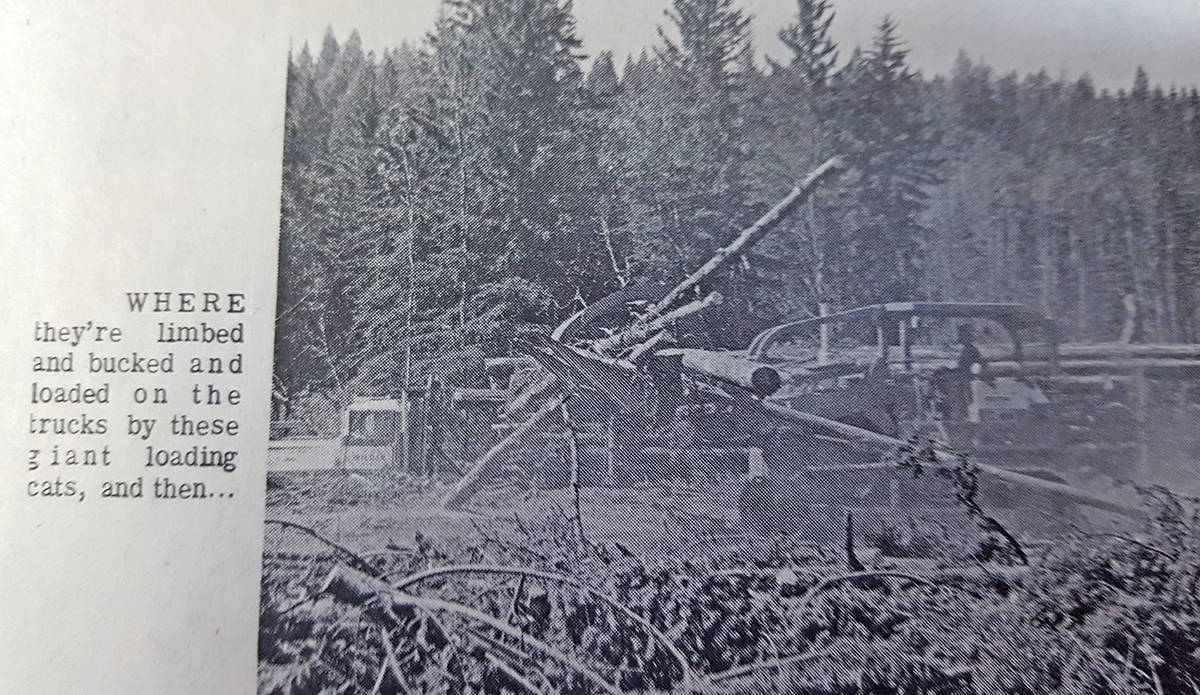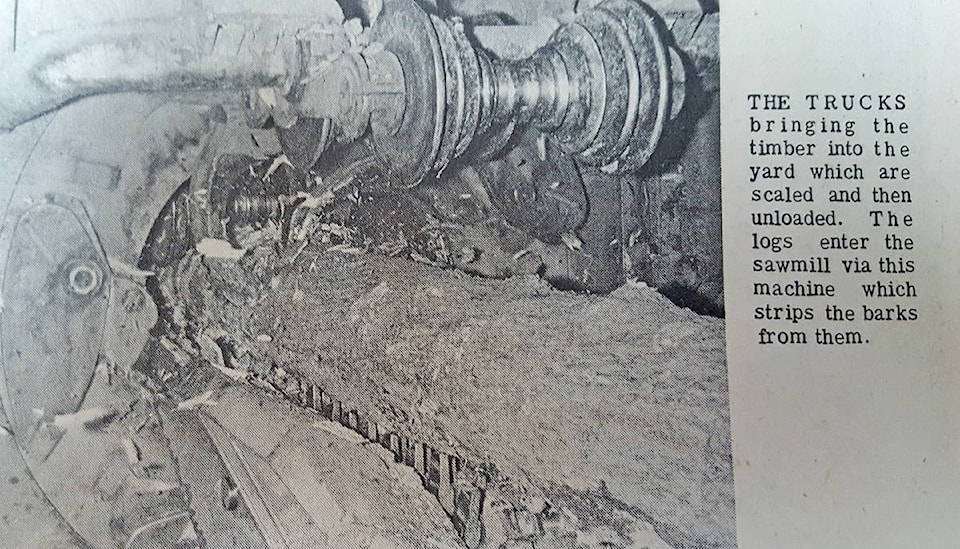Originally published in Casual Country, 1969
The lumbering industry in the Cariboo has come of age.
Truth of this statement is borne out of the remarks of Hon. Ray Williston, minister of lands and forests, who, speaking here last month, praised the district industry as setting a record in forest utilization.
He singled out Jacobson Bros. Forest Products, Pinette & Therrien and Merrill-Wagner as examples of high conversion plants.
This year we are taking a look at Jacobson Bros. as an example of the growth of an industry from a few portable sawmills twenty years ago to the eminent position it holds today.
The Jacobsons have a long history in the lumber industry in the province, dating back to 1928 in the Terrace area, but their association with the Cariboo goes back to 1954 when the brothers started their mill in Beaver Valley near Horsefly. In those early days the mill cut was 10-12 million board feet annually.
Ten years later, with the knowledge that the forests demanded increased utilization, the step was taken to build a modern, fully integrated sawmill at railhead in Williams Lake. This was the first step in developing close utilization. The next was the construction last year of the “smallwood” side of the mill, which incorporates the latest technology in the handling and milling of smallwood — wood down to four inches in diameter. And the development in this direction goes on. After hauling the raw log product 80 to 90 miles, it is imperative that every possible milling procedure be developed. This year a million-dollar-plus planer mill and drying sheds will be constructed, as well as additional kiln capacity. The building to house the planer mill and drying shed will be 700 feet long and 136 feet wide with a clear span structure, the largest clear span in the Cariboo.
READ MORE: Hospital brings life to budding community
Production of the modern mill is 80 to 90 million board feet per year, employing in the milling and planer operation alone 130 men and women with an annual payroll of one million dollars.
LOGGING
Feeding this mill demands another complex operation. Logging too has come a long way from the cut and rush period of 20 years ago, because utilization begins in the bush.
Since 1962 the company has contracted its logging and three firms now supply the mill. Basic contractor is Prairie Creek Logging Ltd., a company that started in 1962 with two cats and has grown into an operation that employs 26 men and produces annually about 40 million board feet.
Two other basic logging contractors who bring log production up to mill capacity are John Wokentin and Jack Dubois’ D & D Logging.
Hauling is of course a major part of the operation, and added to the company’s basic fleet are the trucks of contractor RB Wilder & Sons Ltd. During a peak period such as pre-breakup, 25 to 28 trucks are hauling into the log yard.
FORESTRY
More and more emphasis is being placed on the role of commercial companies in forest management. To this end, a new concept in selling timber, similar in many aspects to the tree farm licence system, was instituted by the Forest Service in 1968. Under the new formed tenure, the industry is charged with a greater responsibility in forest management and protection, (both from insects and fire), and all cutting must be done to “close utilization” - with definite rules of cutting sizes.
It is a completely co-operative arrangement with the Forest Service and is based on the sustained yield concept so that future generations are assured of an equal or greater harvest of lumber from British Columbia lands. Jacobson Bros. are proud of the fact that their company is the first in converting all their operations in all three units to the new form of tenure, which requires plans of development of such procedures as road systems and planting schedules over the next five to 10 years.
Like other companies in the area, Jacobson Bros., logs over two distinct types of growing areas, the wet belt of Quesnel Lake, similar to coastal areas, and the dry belt of the Williams Lake and Chilcotin stands.
Forest management practice is therefore varied. In the dry belt there are many young trees under the mature forests, so logging emphasizes the protection of these young stands. In the wet belt the stands are mature to over mature and under the main stands no young trees are present. The answer here is to log in blocks of 100 to 500 acres, slash all non-merchantable trees and plant seedlings. Jacobsons have started this program and hope to get seedlings in the fall. They collected their own Douglas Fir seed and these are being grown in the Forest Service nurseries at the coast.
This is the story of one major company and its work towards close utilization. It is a story that is being repeated throughout the Cariboo as industry takes a more responsible role in forest management.
READ MORE: Late Irene Peters envisioned world where everyone is welcome
